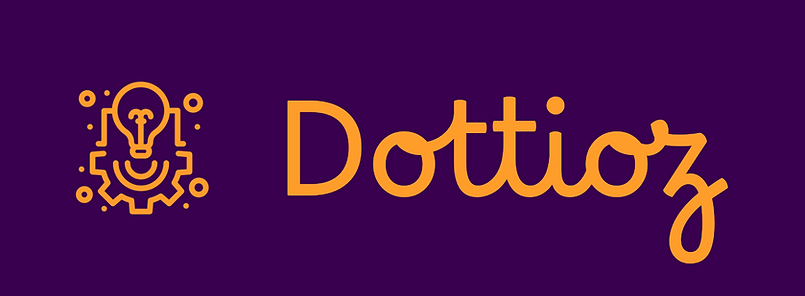What You Need to Know About Privacy Policies
- Kevin White

- Jul 12
- 4 min read
In today's digital age, understanding privacy policies is crucial for both businesses and consumers. A privacy policy outlines how an organization collects, uses, and protects personal information. This post will explore what you need to know about privacy policies, including their importance, key elements, and how they impact your online experience.
Privacy Policy Essentials
Privacy policies are not just legal documents; they are also an essential tool for transparency and trust. When customers engage with a business—whether online or offline—they want to know how their information is handled. A clear privacy policy can enhance user confidence, foster loyalty, and even comply with legal obligations.

Understanding the Importance of Privacy Policies
Why do privacy policies matter? Here are a few reasons:
Legal Compliance: Many jurisdictions require businesses to have a privacy policy. For example, under the General Data Protection Regulation (GDPR) in the EU, companies must inform users about their data practices. Failure to comply can result in hefty fines.
Consumer Trust: Transparency builds trust. When a business is upfront about how it uses personal data, customers are more likely to engage with it. In fact, a survey by Trustpilot found that 81% of consumers are more likely to buy from companies that are transparent about their data practices.
Risk Management: Having a privacy policy can help mitigate risks related to data breaches. If you have clear guidelines on how you protect data, it can serve as a record of your diligence, which could be beneficial in case of legal challenges.

What are the Basics of the Privacy Act?
The Privacy Act is fundamentally designed to protect individuals' personal information. Here are the key principles:
Collection Limitation: Organizations should only collect personal data necessary for their functions. For example, an e-commerce site may collect email addresses for order confirmations but should not ask for unnecessary information.
Purpose Specification: A privacy policy must specify the purposes for collecting personal information. This means clearly stating how customer data will be used, whether for marketing, service improvement, or compliance.
Data Safeguards: Entities must implement security measures to protect personal data. This can range from encryption methods to secure server hosting.
User Rights: The act recognizes individuals’ rights regarding their personal information, including the right to access, rectify, and delete their data.
Accountability: Organizations are responsible for complying with these principles and must be transparent with their privacy practices.

Key Elements of a Privacy Policy
When drafting a privacy policy, certain elements should always be included:
Data Collection Practices: Describe the types of personal data collected, such as names, emails, and payment information.
Use of Data: Clearly articulate how the information will be used. It is essential to avoid vague language—specific purposes build trust.
Cookies and Tracking Technologies: If the website uses cookies, the policy should explain what cookies are used and their functions.
Third-party Sharing: Disclose if personal information will be shared with third parties and under what circumstances.
User Rights: Outline how users can access, correct, or delete their data.
Contact Information: Provide contact details for users who have questions or concerns about the policy.
How to Create a Privacy Policy That Works for You
Creating an effective privacy policy isn’t a one-time task. Here are some actionable steps to ensure your privacy policy meets legal standards and user expectations:
Template Usage: Start with a privacy policy template to cover essential elements. However, ensure it is tailored to your specific business practices.
Consult Legal Experts: It's always beneficial to get a privacy attorney’s insight to ensure compliance with local and international laws.
Regular Updates: As regulations change and your business evolves, regularly review and update your privacy policy. Keeping it current ensures ongoing compliance and transparency.
User-Friendly Language: Avoid legal jargon. Write your privacy policy in simple language that is easy for consumers to understand.
Visibility: Place the privacy policy link prominently on your website. Many users will look for it in the footer or during sign-up processes.
The Impact of Non-Compliance
Failing to comply with privacy laws can have significant repercussions. Companies that neglect their privacy policies may face intense scrutiny from regulatory bodies. Legal actions can lead to financial penalties, loss of customer trust, and even compromising a brand’s reputation.
For instance, in 2020, a major retail brand was fined $5 million for not safeguarding customer data and failing to disclose its practices in its privacy policy. This incident serves as a stark warning to all businesses about the importance of taking privacy seriously.
Best Practices for Implementing a Privacy Policy
Educate Your Team: Everyone in your organization should understand the privacy policy and how to adhere to it. Regular training sessions can promote data protection awareness.
Utilize User Feedback: After making your privacy policy available, encourage your users to provide feedback. This can highlight areas of confusion and help refine the document.
Communicate Changes: If your privacy policy changes, communicate this to your users promptly. Transparency during these updates can foster trust and maintain a positive relationship with customers.
Integrate into Business Processes: Ensure that every business operation involving personal data aligns with your privacy policy. Consistency is key.
Monitor Compliance: Regularly audit your practices to ensure compliance with your stated privacy policy. This can help prevent issues before they arise.
Moving Forward with Your Privacy Policy
In a world where personal information is becoming increasingly valuable, having a clear, comprehensive privacy policy is not just advisable—it's essential. Businesses of all sizes must prioritize their privacy practices to remain compliant, build consumer trust, and protect themselves from potential legal consequences.
For further insights into privacy policy fundamentals, you can revisit the privacy policy basics. By understanding these essentials, you can help safeguard personal information while offering peace of mind to your customers.
In summary, invest the time and resources needed to create a strong privacy policy that will serve both your organization and your customers in the long run.






Comments